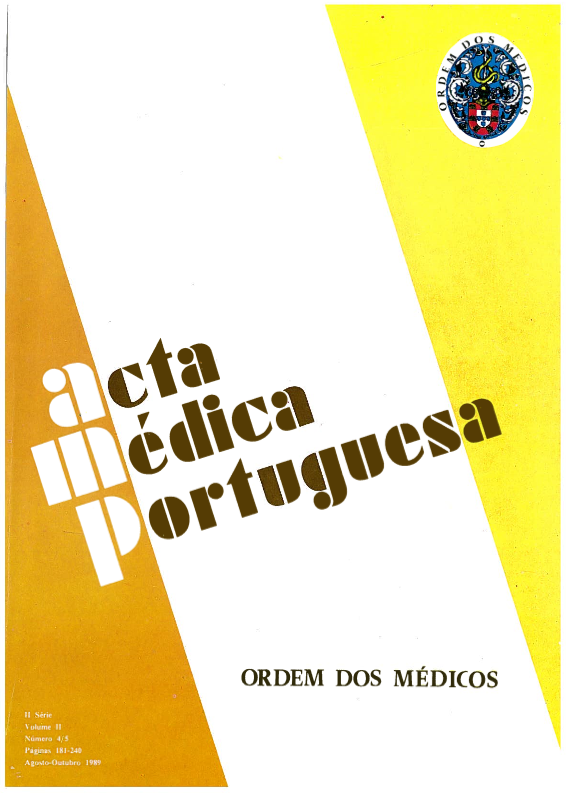Alterações espirométricas provocadas pela hemodiálise. Sua relação com a variação dos parâmetros vulgarmente utilizados na medição da eficácia hemodialítica.
DOI:
https://doi.org/10.20344/amp.3486Resumo
The Forced Expiratory Volume in the 1st second (FEV1) and the Forced Vital Capacity (FVC) was determined before and after a hemodialysis (HD), in 61 patients suffering from chronic renal failure (CRF). Before and after the same HD the value of the following parameters were determined: Na; K; Cl; Urea; Creatinine, Ca; P and hematocrit. We found the following values: initial FEV1 91.68%, final FEV1 100.35%, (P less than 0.001); initial FVC 87.4%, final FVC 95.87% (P less than 0.001). The 61 patients were separated in two sub-groups. In the first the FEV1 variation less than or equal to 8%, while in the second it was greater than 8%. The mean variation of the other parameters was determined in both sub-group. No significant difference was found between them. On the other hand a significant correlation was found (r = 0.06, P less than 0.03) between the improvement of pulmonary function and the ponderal loss. The correction of the hydrosaline overload seems to be an important factor in the reported spirometric improvement.Downloads
Downloads
Como Citar
Edição
Secção
Licença
Todos os artigos publicados na AMP são de acesso aberto e cumprem os requisitos das agências de financiamento ou instituições académicas. Relativamente à utilização por terceiros a AMP rege-se pelos termos da licença Creative Commons ‘Atribuição – Uso Não-Comercial – (CC-BY-NC)’.
É da responsabilidade do autor obter permissão para reproduzir figuras, tabelas, etc., de outras publicações. Após a aceitação de um artigo, os autores serão convidados a preencher uma “Declaração de Responsabilidade Autoral e Partilha de Direitos de Autor “(http://www.actamedicaportuguesa.com/info/AMP-NormasPublicacao.pdf) e a “Declaração de Potenciais Conflitos de Interesse” (http://www.icmje.org/conflicts-of-interest) do ICMJE. Será enviado um e-mail ao autor correspondente, confirmando a receção do manuscrito.
Após a publicação, os autores ficam autorizados a disponibilizar os seus artigos em repositórios das suas instituições de origem, desde que mencionem sempre onde foram publicados e de acordo com a licença Creative Commons









